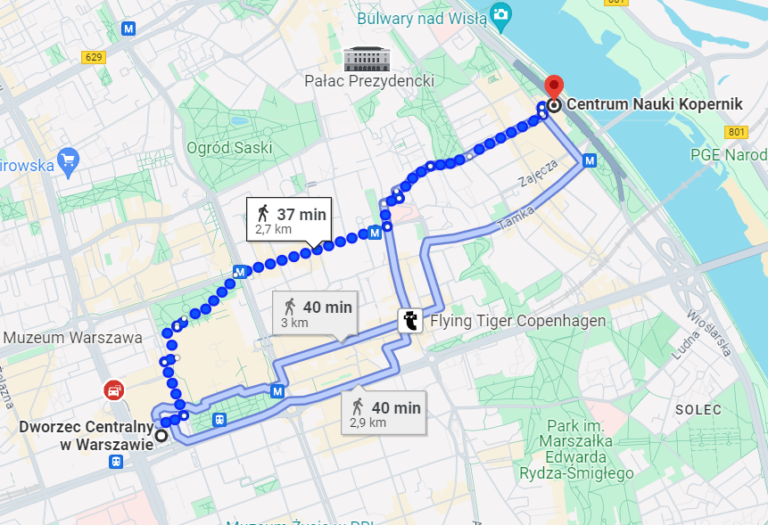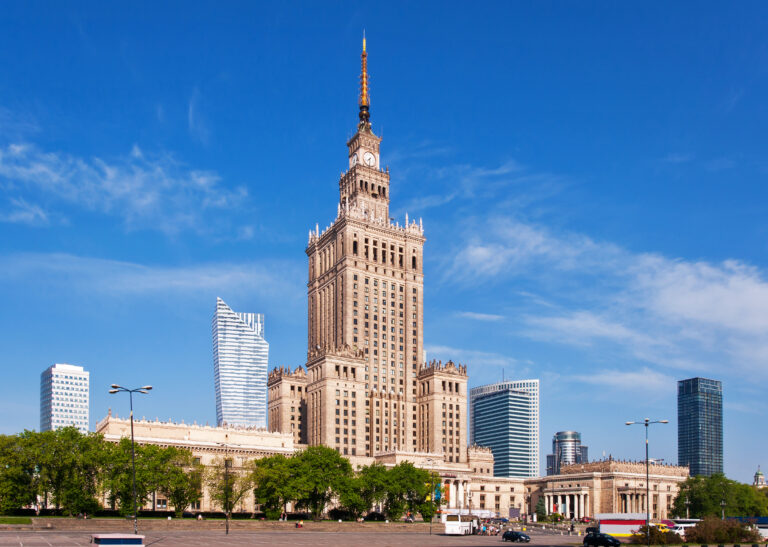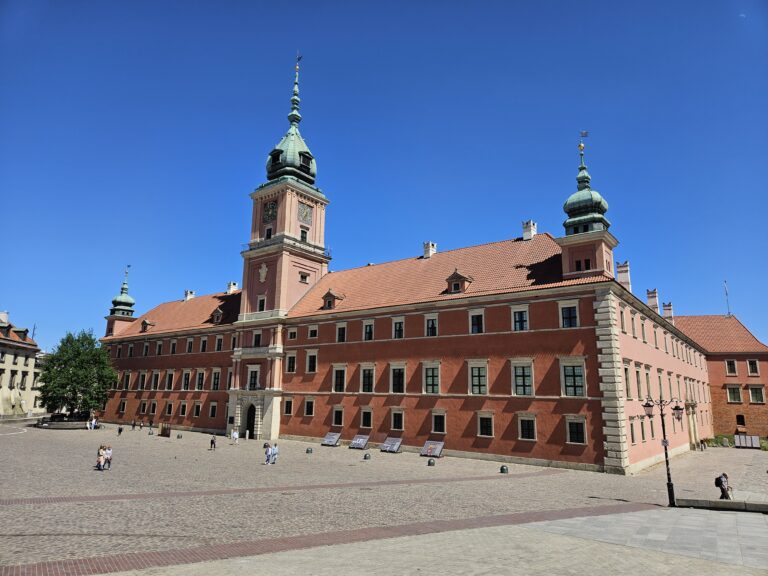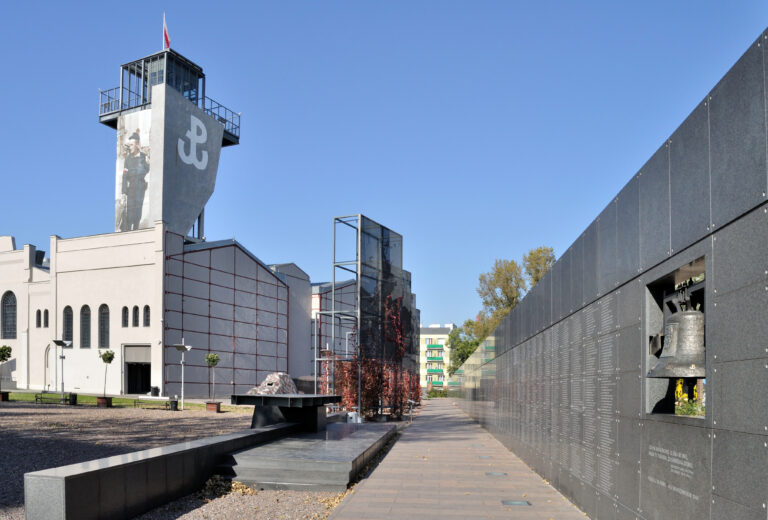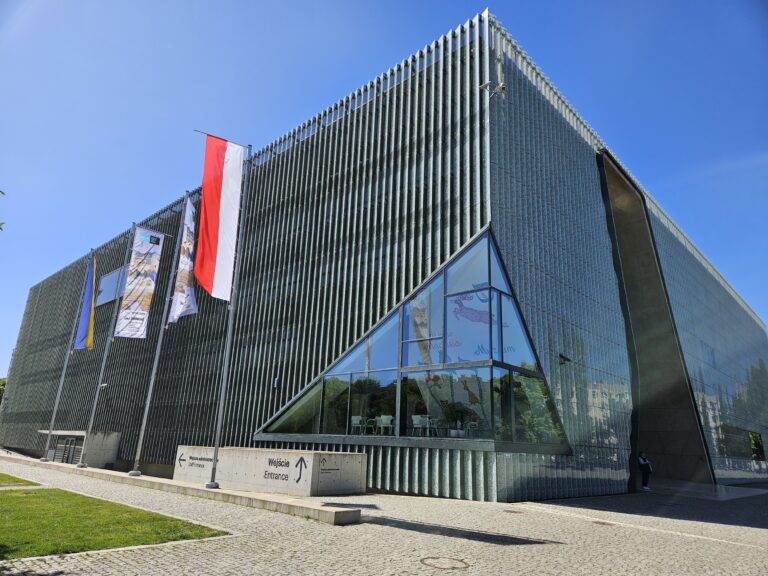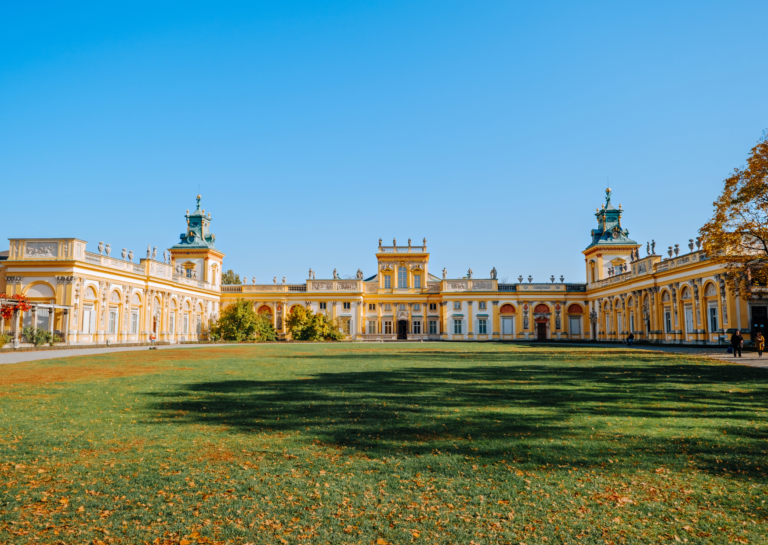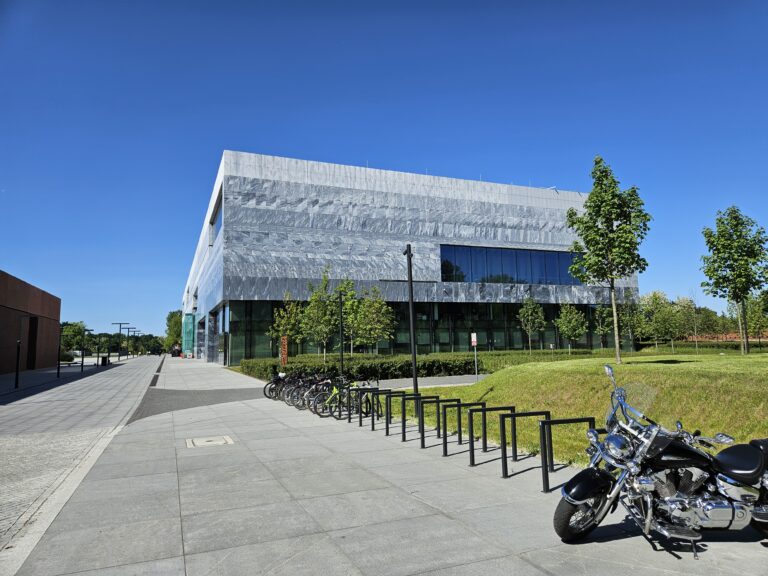Copernicus Science Center

Copernicus Science Center
How to get to Copernicus Science Center
The Copernicus Science Center has an underground parking lot. The fee is PLN 6 for each started hour, and payment is only possible by card. The parking lot is available for passenger cars up to 190 cm high.
You can also use the paid parking zone in front of Kopernik, which is open from Monday to Friday from 8:00 a.m. to 8:00 p.m.; parking is free on weekends. The number of parking spaces is limited.
You can reach the Copernicus Science Center in the following ways:
- 2 metro line – getting off at the Copernicus Science Center station (go to the Wybrzeże exit Kościuszko).
- Buses:
○ 106, 118, 127 — getting off at the Biblioteka Uniwersytecka stop,
○ 185 — getting off at the Copernicus Science Center Metro stop
○ 162 — getting off at the Copernicus Science Center Metro stop.
In addition, from the Central Railway Station you can take bus line 127 directly.
Detailed bus and tram timetables can be checked on the website www.jakdojade.pl
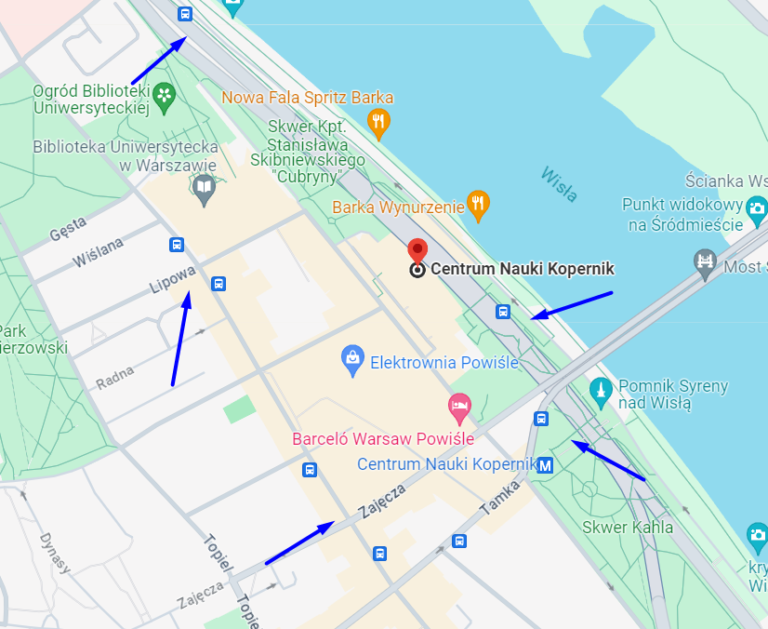
What exhibitions will you see in Copernicus Science Center
At the Copernicus Science Center you will see permanent exhibitions such as “The World in Motion”, where interactive exhibits present the laws of physics, or “Re: generation”, which focuses on biotechnology and medicine. Visitors can conduct their own experiments, learning about the dynamics, energy, genetics and functioning of the human body.
The Copernicus Science Center regularly organizes temporary exhibitions presenting the latest scientific and technological achievements. The topics of these exhibitions are diverse, from microorganisms to space research. These exhibitions, often created in cooperation with other institutions, allow you to learn about current trends and discoveries.
The “Heavens of Copernicus” planetarium offers fascinating astronomical projections that take viewers on a journey through space. Thanks to modern technology, visitors can see visualizations of the solar system, distant galaxies, and discover the history and mythology behind the stars, making learning about the universe even more exciting.
Copernicus Science Center Google reviews:
Touring Copernicus Science Center with children
For the youngest children, the Copernicus Science Center offers a special zone called “Bzzz!”. It is a place designed with the youngest in mind, full of interactive and safe toys that stimulate the senses and develop basic skills. There are soft blocks, colorful elements and simple mechanisms that children can touch, move and rotate.
Children aged 4-13 will find many attractions at the Copernicus Science Center, such as interactive exhibits at the “World in Motion” exhibition, where they can experiment with the laws of physics. The robotics laboratory is another interesting place where children can design and program simple robots, developing their technical skills and logical thinking.
Young people will find more advanced attractions at the Copernicus Science Center, such as a chemical laboratory where they can conduct experiments and discover the secrets of chemistry. The “Heavens of Copernicus” planetarium offers fascinating astronomical projections that allow you to deepen your knowledge about space. The High Voltage Theater presents spectacular shows of electrical and magnetic phenomena.
Frequently Asked Questions
The Copernicus Science Center is open from Tuesday to Sunday, usually from 9:00 a.m. to 6:00 p.m. However, opening hours may vary depending on the day of the week and season, so it is worth checking the official website for current information.
Yes, it is recommended to purchase tickets online in advance to avoid queues and ensure that tickets will be available for your chosen date. Tickets can be purchased on the official website of the Copernicus Science Center.
For children aged 0-3, there is a “Bzzz!” zone, full of interactive and safe toys. Older children will find interesting exhibits at exhibitions that are adapted to their age and interests.
Yes, there is a cafe and restaurant at the Copernicus Science Center where you can eat meals or snacks. There are also seating areas where you can relax.
Yes, the Copernicus Science Center is adapted for people with disabilities. The building has elevators, ramps and appropriately adapted toilets. Wheelchairs are also available at the Center.
Yes, taking photos is allowed in most areas of the Copernicus Science Center, with the exception of some temporary exhibitions where restrictions may apply. It’s always worth checking the signs at the entrance to the exhibition.
Yes, the Copernicus Science Center offers a variety of workshops and educational activities for children and teenagers. These activities include experiments, science demonstrations, and interactive educational sessions. Information about available classes can be found on the Center’s website.
Yes, the Center has a cloakroom and lockers where you can leave your personal belongings. Lockers are available for a small fee.
The Copernicus Science Center is easily accessible by public transport. The nearest metro station is “Centrum Nauki Kopernik” on the M2 line. You can also take a tram or bus, and the stops are located near the entrance to the Center.
Yes, the Copernicus Science Center offers the possibility of hiring guides who will show you around the exhibitions and talk about the exhibits. You can also use the mobile application with an audio guide that provides additional information about the exhibitions.
Copernicus Science Center
Centrum Nauki Copernik in Warsaw is one of the most important educational and cultural institutions in Poland, whose mission is to popularize science through interactive exhibitions and active participation of visitors. Opened in 2010, the center offers a rich program for people of all ages, combining education with fun and innovation.
The center houses numerous permanent exhibitions, such as “The World in Motion” and “Re: Generation”. “The World in Motion” focuses on understanding the laws of physics, and interactive stations allow you to experiment with physical mechanisms and phenomena, which makes science more accessible and understandable. “Re:generation” focuses on biotechnology, genetics and medicine, presenting the latest discoveries in these fields. Visitors can learn how the human body functions, discover the secrets of DNA and understand how technology affects our health.
The Copernicus Science Center also regularly organizes temporary exhibitions covering a variety of science and technology topics. Thanks to cooperation with institutions from around the world, visitors have the opportunity to see unique and innovative exhibits that expand their knowledge and understanding of current trends in science.
